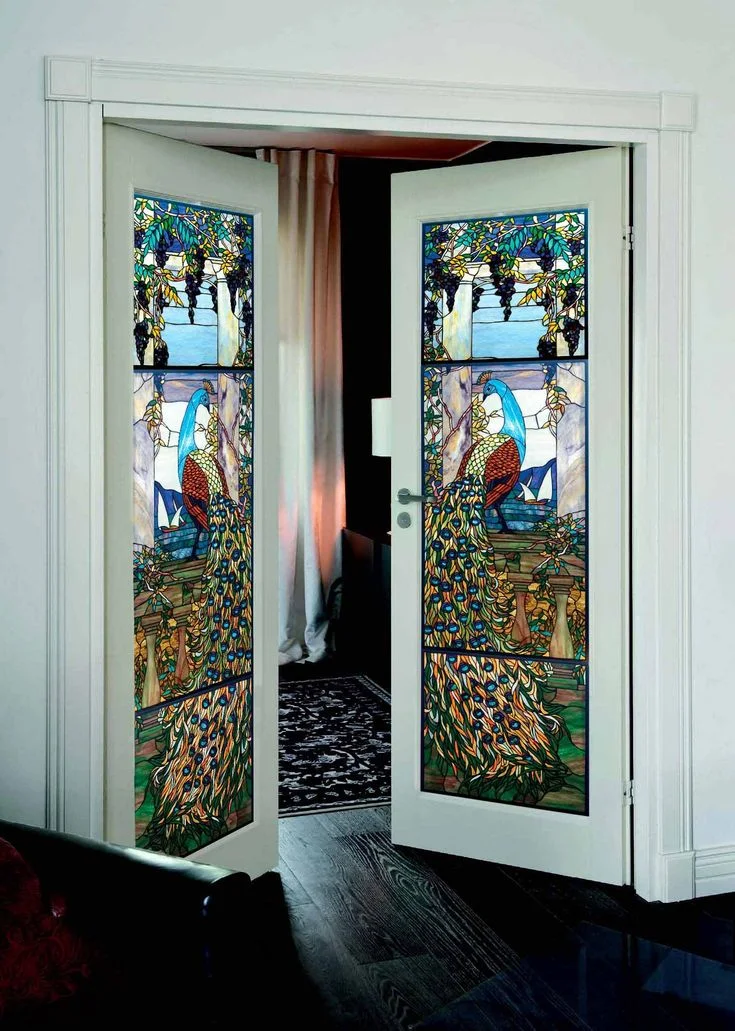Stained glass windows, with their vibrant colors and intricate designs, have captivated people for centuries. More than just beautiful decorations, these windows tell stories, illuminate spaces, and offer a glimpse into the artistic traditions and beliefs of different eras.
From Ancient Beginnings to Medieval Masterpieces:
The origins of stained glass can be traced back to ancient times. Early examples of glass mosaic art were found in Roman and Byzantine structures, showcasing simple geometric patterns and vibrant colors. However, it was during the Middle Ages that stained glass truly flourished.
The development of gothic architecture, with its towering cathedrals and vast windows, provided the perfect canvas for stained glass artists. These skilled craftspeople used lead came to hold together pieces of colored glass, creating elaborate scenes depicting biblical stories, saints, and religious symbolism. These windows served as a form of visual storytelling for an illiterate population, bringing to life the teachings of the Church.
Crafting a Work of Art:
The process of creating stained glass is both intricate and laborious. It starts with selecting and cutting pieces of colored glass, often sourced from specialized glassmakers. The glass is then shaped and cut to fit the desired design, and the pieces are joined together using lead came, a flexible strip of lead with a groove running down the center. Once the pieces are joined, a layer of solder is applied to seal the lead came and create a stronger bond. The finished window is then placed in a frame and secured to the opening.
Beyond Cathedrals: The Modern Renaissance of Stained Glass:
While stained glass windows are most commonly associated with churches and cathedrals, their use has expanded beyond religious structures. Modern stained glass artists have embraced the medium to create contemporary designs that reflect current trends and styles.
Today, stained glass is used in a wide range of applications, including:
- Residential Homes: Bringing a touch of elegance and character to living rooms, kitchens, and entryways.
- Public Buildings: Adding artistic flair to libraries, museums, and government buildings.
- Commercial Spaces: Enhancing the aesthetics of shops, restaurants, and hotels.
- Art Installations: Creating stunning visual experiences in galleries and public spaces.
The Enduring Appeal:
Stained glass windows continue to capture the imagination with their ability to transform light into a dazzling kaleidoscope of colors and patterns. They offer a unique blend of history, craftsmanship, and artistry, making them a timeless and captivating element in any setting.
A Legacy of Light:
As we move into the future, stained glass windows will continue to serve as a powerful reminder of the beauty and creativity of human expression. They offer a glimpse into the past, while simultaneously embracing the present and inspiring generations to come.
Stained glass artist and jeweler Neile Cooper's passion for nature has manifested in a truly extraordinary way: Glass Cabin. Nestled behind her home in Mohawk, New Jersey, this small sanctuary is a testament to her artistry, featuring her stunning stained glass designs on every available surface.
Built almost entirely from repurposed window frames and lumber, the cabin is a symphony of light and color. Dozens of Cooper's intricate stained glass panels, depicting delicate flowers, soaring birds, fluttering butterflies, whimsical mushrooms, and other scenes from the natural world, bathe the space in a vibrant glow. These same motifs, so beloved in Cooper's jewelry designs, take on an even grander scale within the cabin's enchanting walls.
A glimpse into this unique space can be found on Instagram, where photos reveal the captivating beauty of Glass Cabin. It's a testament to Cooper's talent and a reminder that art can truly transform even the smallest spaces into havens of wonder.
Other works:

















Comments
Post a Comment